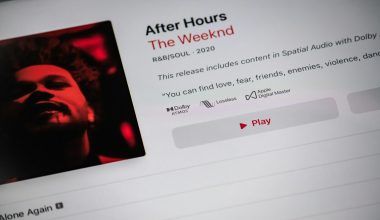If you’re an artist or musician trying to get your music out to the world, you’ve probably come across the term “playlist pitching.” It might sound complicated, but don’t worry—this guide will explain everything in simple terms. We’ll cover what playlist pitching is, why it’s important, and how you can use it to your advantage to get your music heard by more people.
So, let’s dive in and explore this essential part of music promotion!
What Is Playlist Pitching?
In the simplest terms, playlist pitching is the process of submitting your music to playlist curators in the hopes of getting your song added to their playlist. Playlists are like the modern-day mixtapes—people listen to them on platforms like Spotify, Apple Music, and YouTube to discover new music or enjoy curated collections of songs.
Playlist pitching helps your music reach new listeners. It’s like knocking on the doors of music lovers who are ready to explore fresh tunes. By getting your song featured, you can increase your visibility, gain streams, and even attract new fans.
Why Is Playlist Pitching Important?
Let’s face it—the music industry is crowded. Playlist pitching gives you a chance to stand out without spending a fortune.
Here’s why playlist pitching matters:
- Reach a Targeted Audience: Playlists are often genre-specific or mood-based. If your song fits, it’s more likely to connect with listeners who will enjoy your music.
- Boost Streams: More playlist placements mean more streams. And more streams can lead to higher revenue and better chart positions.
- Build Credibility: Being featured on reputable playlists gives you credibility as an artist. It shows that curators believe in your music.
- Open New Opportunities: Playlists can catch the attention of industry professionals, like record labels or managers, who may want to work with you.
Types of Playlists You Can Pitch To
Here are the main types:
- Editorial Playlists: These are curated by the platform’s in-house team, like Spotify’s “New Music Friday.” They are highly competitive but offer massive exposure.
- User-Curated Playlists: These are created by individual users or influencers. Some of these playlists have thousands or even millions of followers.
- Independent Curator Playlists: Many blogs, websites, and agencies curate playlists. These are more accessible and can still bring significant value to your music.
How Does Playlist Pitching Work?
Now that you know what playlist pitching is, let’s talk about how it works. Here’s a step-by-step breakdown:
- Identify Your Best Track: Choose the song you want to pitch. It should be polished, professional, and ready to impress.
- Research Playlists: Find playlists that match your genre, style, or vibe. You can use tools like Spotify’s search feature, websites, or playlist directories to identify suitable curators.
- Reach Out to Curators: Contact the playlist curators via email, social media, or submission forms. Make your message personal, concise, and professional.
- Provide Supporting Materials: Include a link to your song, a short bio, and any press coverage or accolades to make your pitch more compelling.
- Follow Up (But Don’t Spam): If you don’t hear back, it’s okay to follow up after a week or two. But don’t bombard curators with messages—they might blacklist you.
Tips for Successful Playlist Pitching
- Do Your Homework: Take the time to research curators. Look at their playlists and see if your music genuinely fits.
- Create a Catchy Subject Line: If you’re emailing a curator, your subject line needs to grab attention. Keep it short and intriguing.
- Be Genuine: Don’t use generic templates. Mention something specific about the curator’s playlist to show you’ve done your research.
- Use Professional Tools: Platforms like SubmitHub or Playlist Push can streamline your pitching process. They connect you with curators for a fee.
- Network Within Your Community: Sometimes, a recommendation from a fellow artist can open doors. Build relationships with other musicians and industry professionals.
The Role of Metadata in Playlist Pitching
You might not think about metadata, but it plays a crucial role in playlist pitching. Metadata is the information attached to your song, like its title, artist name, and genre. Make sure this data is accurate and optimized.
For example:
- Use a clear and searchable artist name.
- Tag your song with appropriate genres and moods.
- Include any relevant lyrics or credits.
How to Stand Out as an Artist
To make your playlist pitching efforts even more successful, you’ll need to stand out. Here are some ideas:
- Have a Strong Online Presence: Curators often look at your social media to see how engaged your audience is.
- Invest in High-Quality Artwork: Eye-catching visuals can make your submission more appealing.
- Release Music Regularly: Consistency shows that you’re serious about your craft.
- Leverage Analytics: Use tools like Spotify for Artists to understand your listeners and refine your strategy.
Common Mistakes to Avoid in Playlist Pitching
While playlist pitching is a powerful tool, there are some pitfalls you’ll want to avoid:
- Pitching to Irrelevant Playlists: If your song doesn’t fit the playlist, it won’t get added.
- Ignoring Submission Guidelines: Many curators have specific rules for submissions. Follow them carefully.
- Being Pushy: Respect the curator’s time. If they’re not interested, don’t argue.
- Skipping the Research: Blindly pitching to every playlist you find is a waste of time. Quality over quantity.
What’s Next After Getting Featured?
Getting added to a playlist is just the beginning. Here’s what to do next:
- Promote the Playlist: Share it on your social media and thank the curator. This builds goodwill and shows you appreciate their support.
- Engage With New Listeners: Respond to comments or messages from people who discovered your music through the playlist.
- Monitor Your Analytics: Look at how your streams and followers grow. This data can help you refine your future pitches.
Final Thoughts
Playlist pitching might sound overwhelming at first, but it’s a skill you can learn with practice. The key is to approach it strategically and authentically. Remember, curators are real people—they want to hear great music just as much as you want to share it.
With the right approach, playlist pitching can become one of the most powerful tools in your music promotion toolkit. So, start pitching today and let your music find its way to listeners around the world!
For further reading, explore these related articles:
- Celebrate the Chill: Best Winter Season Songs for Every Mood
- Kanye West’s New Album: Everything You Need to Know!
For additional resources on music marketing and distribution, visit DMT Records Pvt. Ltd.






